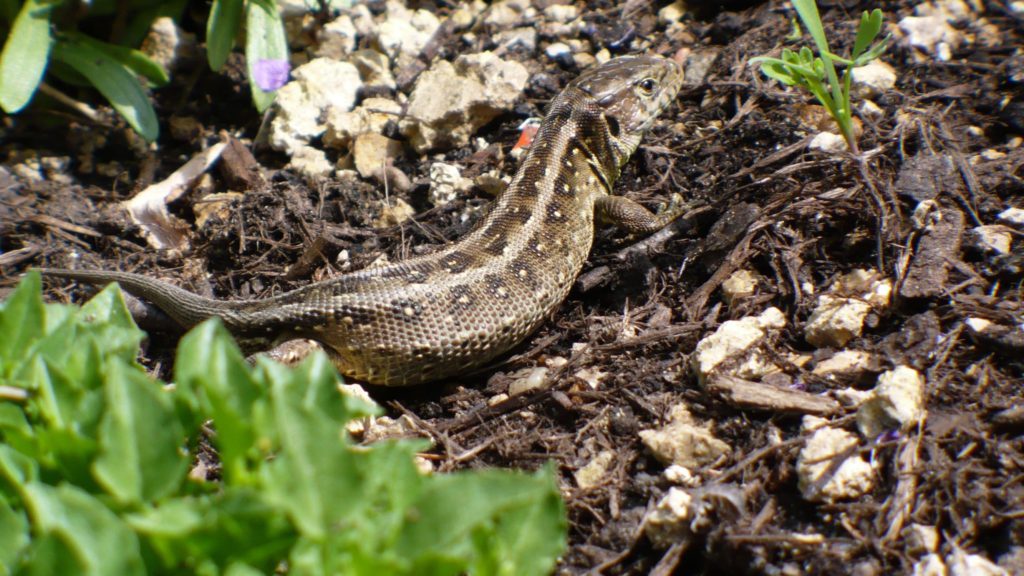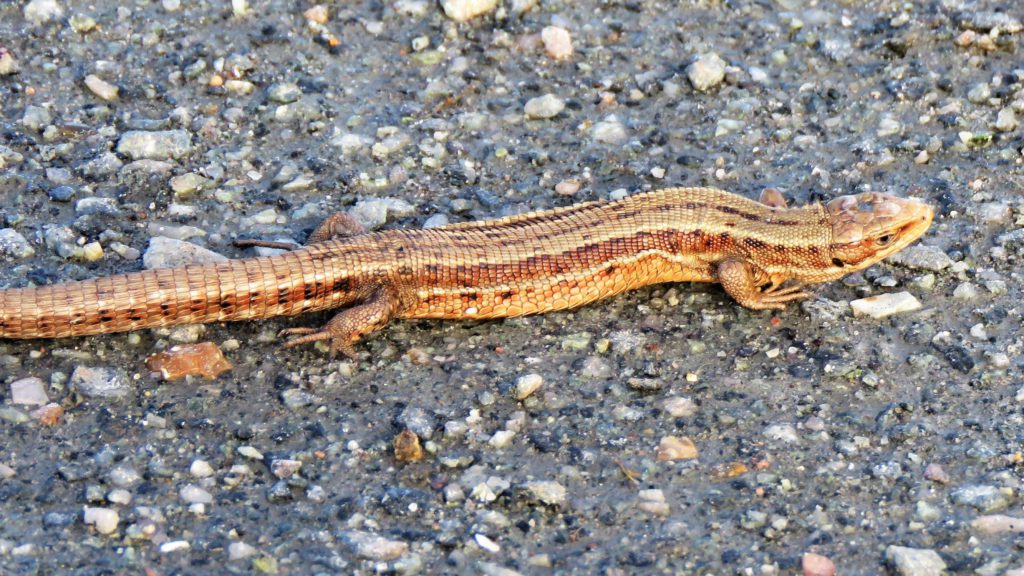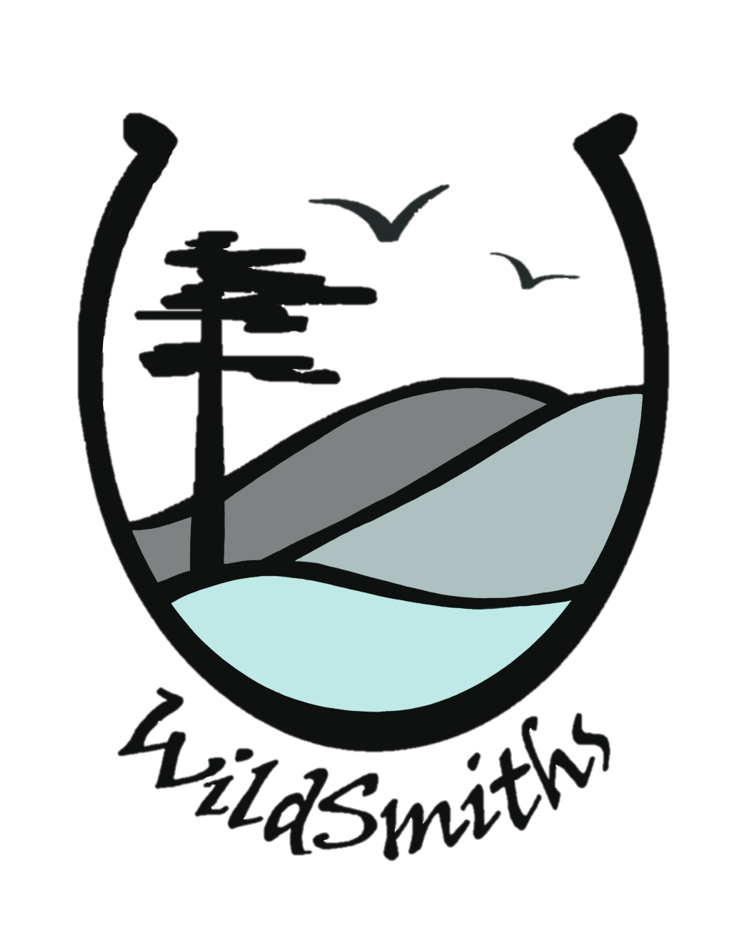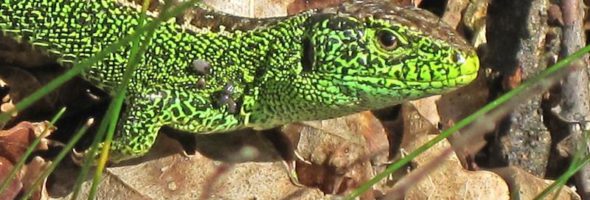
An unexpected feature of Coll’s glorious wildlife is the presence of a small colony of one of Britain’s rarest reptiles, the Sand Lizard. Take a glance at the Amphibian and Reptile Conservation Trust’s distribution map on the above link and you may think there’s something unlikely about this.
In the UK, the Sand Lizard today has a very restricted distribution, having declined by 80% across its range during the twentieth century. Natural populations now only occur on the heathlands of Dorset, Hampshire and Surrey and on coastal dune habitats in Lancashire. There has been some good news of late, with successful reintroductions to one or two former sites in southern England and in north Wales. However it is still a rare and localised feature of the UK’s wildlife and, as a result, it enjoys the highest levels of protection through site designations and laws against killing and disturbance.

So what is it doing on Coll? Well, records of its presence on Coll go back some forty years. Despite their northerly location, and being separated from the nearest populations by several hundred miles (not to mention a wide expanse of sea), the sand dunes of Coll have a lot in common with other locations where the Sand Lizard occurs.
They seem to favour tall dune fronts with extensive marram grass for cover, interspersed with lots of bare sand. Being cold-blooded, they need plenty of warming sunlight to get them going. They also need relatively undisturbed sand in which to dig their burrows and lay their eggs. Coll is famously one of the sunniest places in Scotland and the few visitors it receives mean its dunes remain relatively undisturbed, lacking the compaction caused by stabilisation or the bareness created by high levels of human activity. So, just what the Sand Lizard ordered!

Things get more interesting still when you look beyond the UK at the wider distribution of the Sand Lizard across continental Europe and into Asia. It thrives at Coll-like latitudes in Sweden and the Baltic states. Indeed, in southern Sweden, it occurs more or less continuously, and in places abundantly, in a variety of rocky, grassy and sandy habitats.
There has never been an official reintroduction on Coll, but it is tempting to speculate. With so many Sand Lizard sites in southern England being destroyed by development back in the 60s and 70s, perhaps someone took it upon themselves to rescue a few and give them a new home far, far away from all the threats they were facing. If so, it may cause some to frown (the IUCN have strict
rules about this sort of thing and for good reason) but I’d say any harm from this particular reintroduction would appear slight and the survival of a species so rare in the UK has in some small way been furthered as a result.
If you do see a lizard on Coll, it is almost certain to be a Common Lizard. Although absent from most other Hebridean islands, this species is well-established in all of Coll’s terrestrial habitats. It gives birth to live young (hence its alternative name ‘viviparous’). The Sand Lizard, by contrast, lays eggs in the sand, from which its young hatch out after 6-8 weeks. So, if you don’t catch them in the very act of parturition, how can you tell them apart?
Well, most lizard views are fleeting at best, often no more than a rustle as they scurry away. But if you do manage a better view, perhaps early in the morning as they are sunning themselves, the Sand Lizard bears distinctive dark spots with white-centres along its flanks (called ‘ocelli’ or ‘little eyes’). To those familiar with the Common Lizard, the Sand Lizard looks like a more substantial creature with a broader head and shoulders. In the breeding season the males take on a striking green colour (unmistakable when you see one).

So, are you likely to see a Sand Lizard on a visit to Coll? Er… to be honest, it’s pretty unlikely. WildSmiths have seen just a single female here and that was while participating in an organised survey of them a couple of years ago. But seeing something isn’t always the point of enjoying wildlife – knowing that it’s there, understanding a little about its ecology, and being reassured that its habitat is being properly looked after so it can continue to flourish, is often enough. But if you would like to spend a little time looking for one, do get in touch with us at WildSmiths and we’ll see what we can do for you.



I have looked up the Spotted Rock-rose, which the BSBI map tells me has been found on Coll. Records were made in June or August, but I suppose it flowers in June? I wondered if you could tell me what my chances are of seeing it August 16 -19 this year?
Thanks
Christine
Hi Christine – thanks for getting in touch. I’m afraid the Spotted Rock-rose hasn’t been seen for 4-5 years and yes mid-August would be a bit late for it anyway. Still, there will be plenty of other things to enjoy while you’re here: Grass of Parnassus, Pipewort and Bog Orchid should all be going strong – and in theory Irish Ladies-tresses (though I’ve not managed to find any at its usual sites yet this year!!) Best of luck. Greg